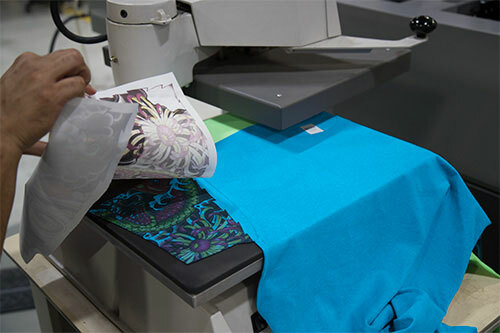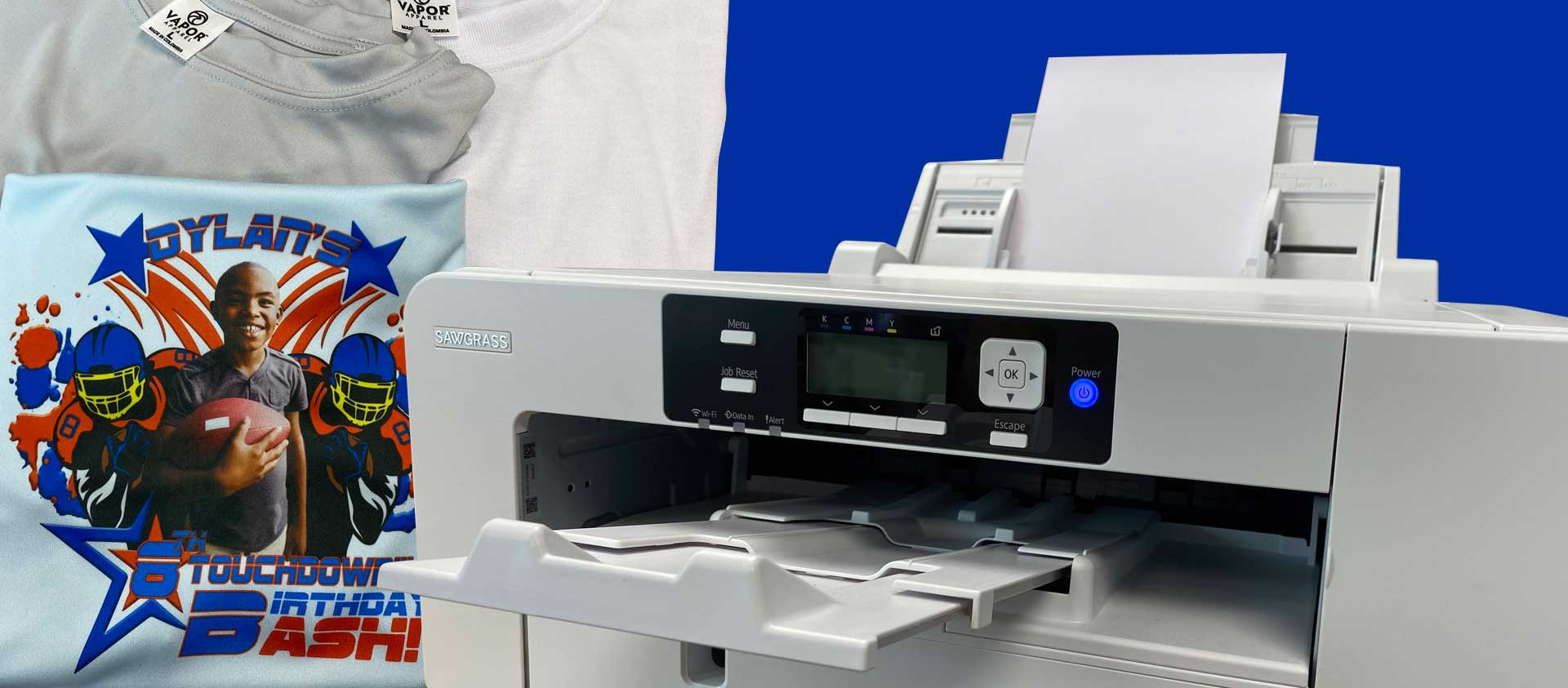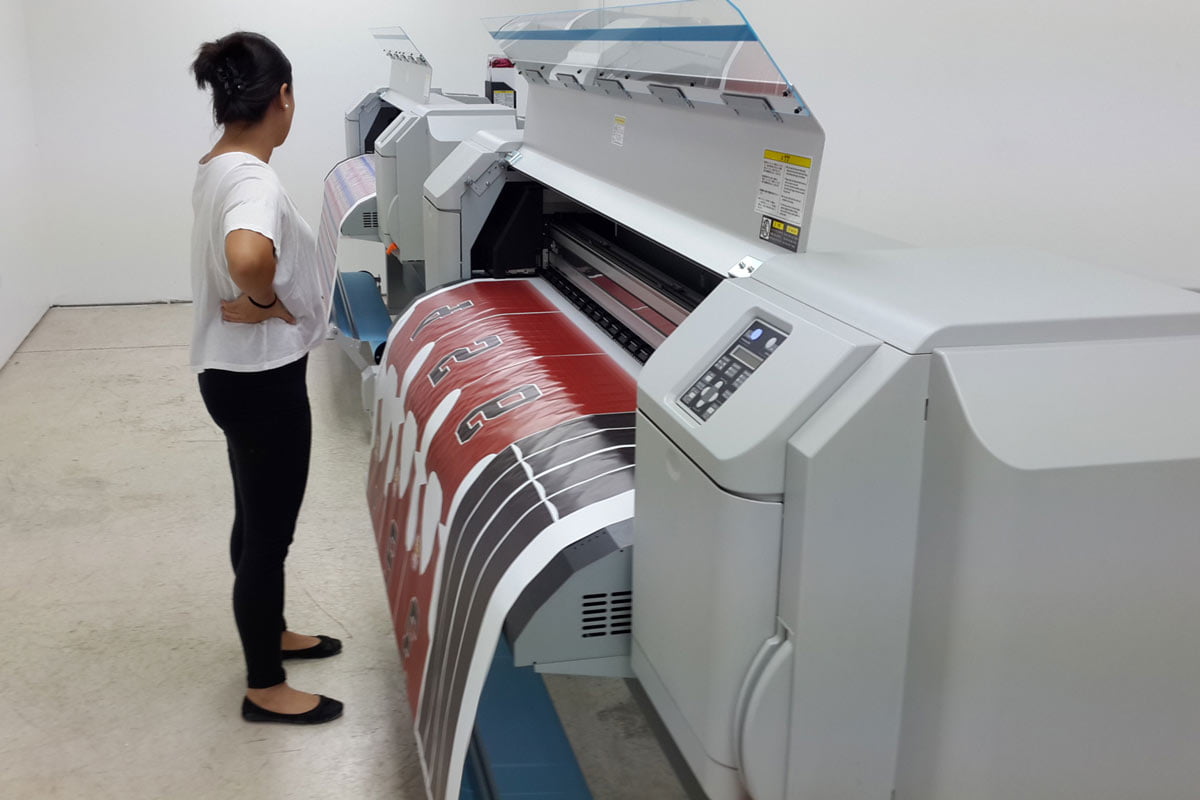The Rise of DTF Printing: Exploring Its Applications and advantages
The emergence of Straight to Film (DTF) printing technology is reinventing the personalized clothing industry, giving significant benefits and a large array of applications. As the appetite for custom items continues to increase, comprehending how DTF printing can fulfill these developing demands is progressively essential.

Comprehending DTF Printing Technology
Recognizing DTF Printing Innovation notes a considerable advancement in the textile printing sector, especially for its convenience and effectiveness. Direct-to-Film (DTF) printing is a cutting-edge process that entails printing designs onto unique transfer movies, which are then moved onto textile utilizing warmth and pressure. Unlike standard approaches, DTF printing does not require pre-treatment of the material, making it possible for a more structured operations.

As soon as healed, the movie is positioned onto the textile, and a warmth press transfers the style by using constant warm and pressure. This results in vivid, high-quality prints that stick flawlessly to numerous textile kinds, including cotton, polyester, and blends (screen printing). The innovation's capability to create vivid and intricate layouts with very little configuration makes it a game-changer in the textile printing sector
Trick Benefits of DTF Printing
One of the vital advantages of DTF printing is its outstanding adaptability, which enables for top quality prints on a vast array of material kinds. This capacity expands beyond standard cotton to consist of polyester, nylon, leather, and even combined materials, making it perfect for varied textile applications. This flexibility minimizes the need for numerous printing innovations, streamlining manufacturing processes and lowering general prices.
One more substantial advantage is the superior print high quality that DTF technology provides. By using lively, durable inks and exact application methods, DTF prints preserve their shade fidelity and intensity also after various cleans. This results in an item that not just looks professional yet also stands the examination of time, giving consistent worth to both manufacturers and end-users.
Moreover, DTF printing provides a streamlined workflow, which can result in raised efficiency and efficiency. Unlike standard methods such as display printing, DTF does not call for complex configuration or substantial drying out times. This ease of use makes it an appealing alternative for businesses of all sizes, enabling quicker turn-around times and the capacity to take care of small to large production runs with very little headache.
Applications in Personalized Apparel
In the world of personalized clothing, DTF printing sticks out as a game-changing innovation that allows producers and designers to generate bespoke apparel with unparalleled information and top quality. Direct-to-film (DTF) printing has actually transformed the customized apparel sector by using versatility in design, vivid shade recreation, and toughness. This ingenious method enables elaborate designs to be moved onto a large range of fabrics without endangering the stability of the material.
One substantial application of DTF printing is in creating custom-made tee shirts, hoodies, and sports apparel. The capability to print intricate graphics with fine information and gradients makes it ideal for individualized clothes, such as group uniforms and marketing product. DTF printing is especially beneficial for one-off pieces and limited-run orders, providing a affordable and efficient remedy contrasted to conventional screen printing techniques (DTF printing).
Furthermore, DTF printing has opened up brand-new opportunities for stylist to explore unique patterns and appearances, allowing the development of cutting-edge, avant-garde collections. This modern technology additionally supports tiny businesses and independent musicians by decreasing the barriers to entrance in the customized clothing market. Eventually, DTF printing is reshaping the landscape of custom-made garments, combining creative expression with technological innovation.
Convenience Throughout Different Products
Building on the developments in customized garments, DTF printing's adaptability across different materials even more improves its appeal. Unlike typical printing approaches, DTF (Direct-to-Film) printing can be put on a comprehensive variety of substrates, including cotton, polyester, blends, leather, and also difficult surface areas like timber and glass. This versatility is accomplished with the distinct procedure where styles are printed onto an unique film and afterwards moved onto the product using a warm press. This permits vivid, top notch prints that retain their honesty throughout numerous appearances and structures.
The ability to publish on diverse products opens up numerous opportunities for companies across various industries. In the promotional items sector, business can tailor a broad selection of products, from carry caps and bags to mugs and phone instances, all with the same printing innovation. In the garment industry, DTF printing makes it possible for designers read the full info here to explore intricate patterns and lively shades on non-traditional textiles, pushing the limits of creative thinking.
Furthermore, DTF printing's compatibility with various products also equates to cost-efficiency and lowered waste, as manufacturers can utilize the very same tools for multiple applications. This adaptability not just broadens the scope of product offerings yet additionally enhances operational effectiveness.
Future Leads of DTF Printing
As the marketplace evolves, the future prospects of DTF printing are poised to reinvent numerous sectors via continuous development and technical innovations. The rise popular for customized apparel and marketing products is driving the requirement for a lot more reliable, functional, and cost-efficient printing approaches. DTF printing, with its capacity to generate high-quality, resilient prints on a variety of materials, stands at the forefront of this change.
Emerging trends indicate that DTF printing will increasingly integrate with automation and AI technologies, boosting manufacturing rate and minimizing labor expenses. Advanced software application services will further maximize layout accuracy, color matching, and print consistency, resolving several of the present restrictions. Additionally, environmentally friendly inks and recyclable transfer films are anticipated to get traction, aligning with international sustainability goals.
As research study and development efforts continue to increase, the extent of DTF printing will likely broaden, opening brand-new avenues for commercial and innovative applications. In recap, the future of DTF printing is intense, encouraging significant innovations and wider sector adoption.
Verdict

Understanding DTF Printing Technology marks a significant improvement in the fabric printing market, especially for its adaptability and effectiveness. Direct-to-Film (DTF) printing is a sophisticated procedure that entails printing styles onto special transfer films, which are then moved onto textile using heat and pressure. DTF printing is specifically useful for limited-run orders and one-off items, offering a effective and affordable option contrasted to conventional screen printing approaches.
Unlike standard printing techniques, DTF (Direct-to-Film) printing can be applied to an extensive array of substrates, including cotton, polyester, blends, leather, and also tough surfaces like timber and glass.DTF printing modern technology is changing the custom garments market by providing reliable, cost-effective, and functional services for generating lively designs on numerous materials without pre-treatment.